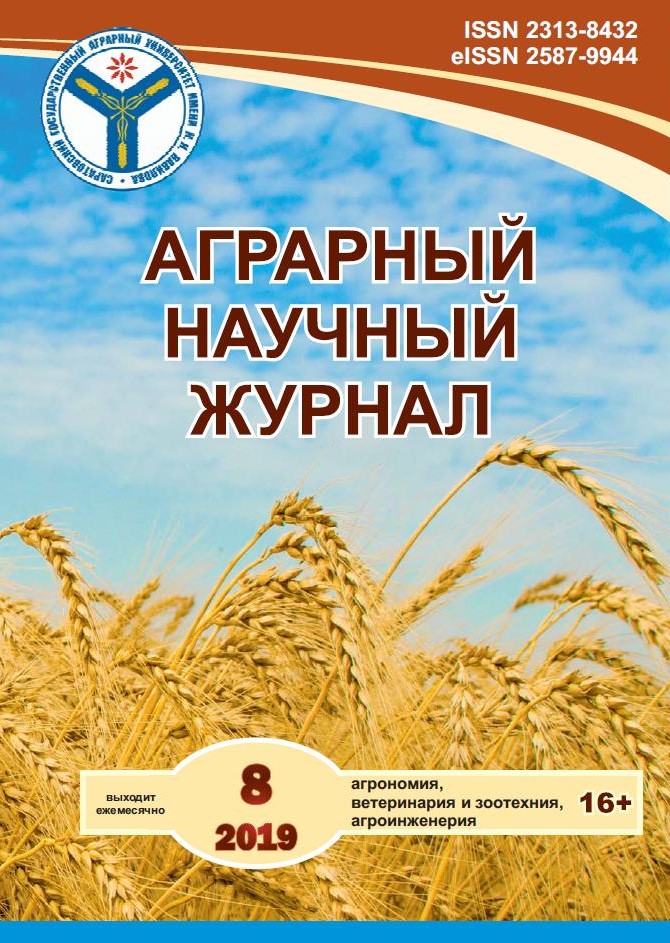Fat-acid composition of the flesh of the carcasses of purebred young rabbits of the most common breeds
DOI:
https://doi.org/10.28983/asj.y2019i8pp58-63Keywords:
rabbits, breed, white giant, soviet chinchilla, Californian, fatty acid compositionAbstract
The content of fatty acids in the meat of carcasses of purebred young rabbits of 77- and 90-day-old age of two meat and skin (white giant and Soviet chinchilla) and one meat breed (Californian) was analyzed. The content in the pulp of carcasses of purebred young rabbits monounsaturated oleic fatty acid is 32.60-35.16%, polyunsaturated linoleic acid - 23.50-27.9%, which provides the therapeutic and nutritional value of rabbit meat. A large mass fraction of unsaturated fatty acids (61.07-67.85%) in the carcass of purebred young rabbits was noted. At the same time, the largest mass fraction of unsaturated fatty acids occurred in the meat portion of the carcasses of young white giant breeds at the age of 77 and 90 days (67.85% - 64.52%). The best balance of fatty acid composition (the ratio of saturated, mono- and polyunsaturated fatty acids) was observed in samples obtained from carcasses of young breeds, the white giant at the age of 77 days - 1.06: 1.28: 1.
Downloads
References
2. Метод расчета йодного числа для оценки качества шпика / К.И. Спиридонов [и др.] // Мясная индустрия. – 2016. – № 4. – С. 48–52.
3. Нестер В.В. Мясная продуктивность и качество мяса некоторых пород кроликов в зависимости от условий выращивания и сроков убоя: дис. … канд. с.-х. наук. – М., 1976. – 140 с.
4. Определение ненасыщенных жирных кислот с мигрирующей двойной связью в сложных биологических матрицах методом газовой хроматографии с плазменно-ионизационным и масс-спектрометрическим детектированием / А.Н. Иванкин [и др.] // Журнал аналитической химии. – 2016. – Т. 71. –№ 11. – С. 1188–1195.
5. Харламов К.В., Тинаев Н.И. Продукция кролиководства: учеб.-метод. пособие. – М.:.ЗооВетКнига, 2015. – 188 с.
6. Харламов К.В., Тинаев Н.И., Жвакина А.Р. Сравнительная характеристика аминокислотного состава мяса помесного и чистопородного молодняка кроликов // Доклады Российской академии сельскохозяйственных наук. – 2016. – № 4. – С. 68–71.
7. Химический состав и питательность мякоти тушек и отрубов гибридного и чистопородного молодняка кроликов / А.Р. Жвакина [и др.] // Аграрный научный журнал. – 2017. – № 9. – С. 10–14.








